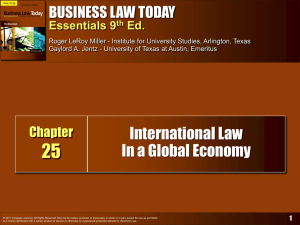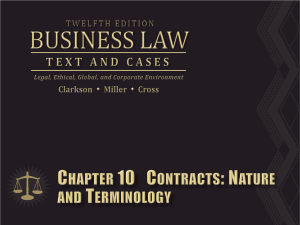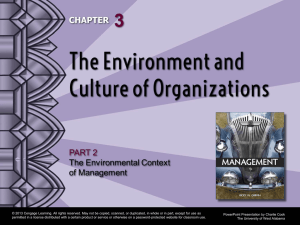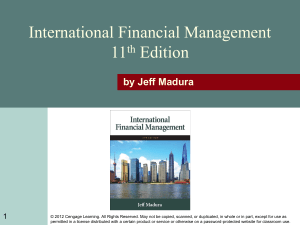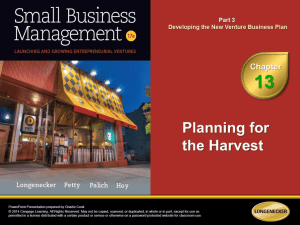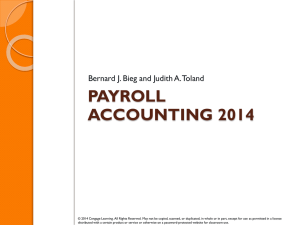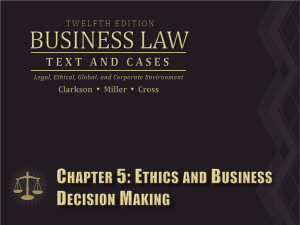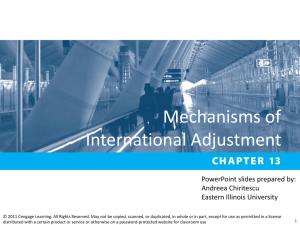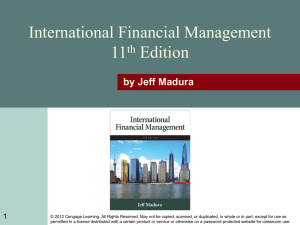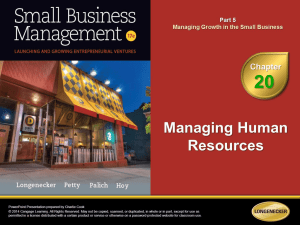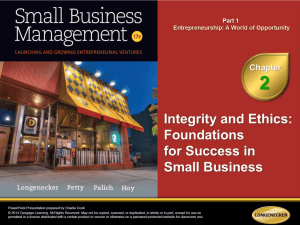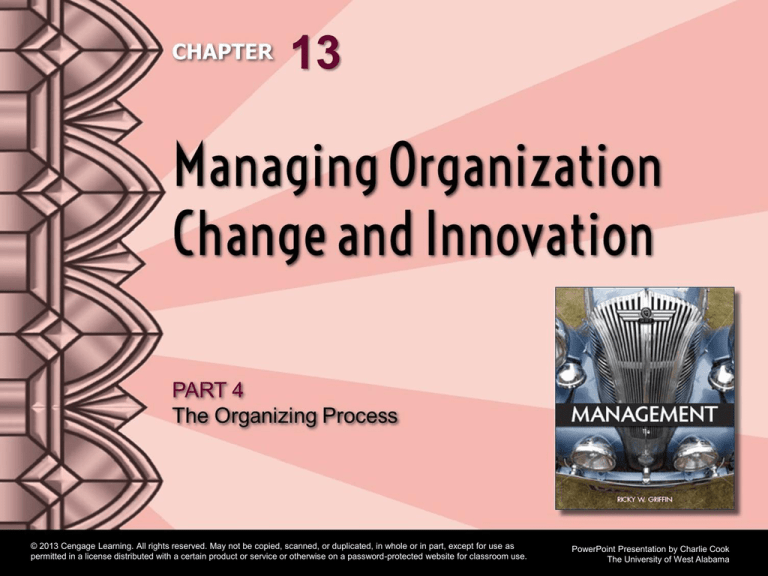
© 2013 Cengage Learning. All rights reserved. May not be copied, scanned, or duplicated, in whole or in part, except for use as
permitted in a license distributed with a certain product or service or otherwise on a password-protected website for classroom use.
PowerPoint Presentation by Charlie Cook
The University of West Alabama
Learning Objectives
1. Describe the nature of organization change, including
forces for change and planned versus reactive change.
2. Discuss the steps in organization change and how to
manage resistance to change.
3. Identify and describe major areas of organization
change and discuss the assumptions, techniques,
and effectiveness of organization development.
4. Describe the innovation process, forms of innovation,
failure to innovate, and how organizations can promote
innovation.
© 2013 Cengage Learning. All rights reserved. May not be copied, scanned, or duplicated, in whole or in part, except for use as
permitted in a license distributed with a certain product or service or otherwise on a password-protected website for classroom use.
13–2
The Nature of Organization Change
• Organization Change
Any substantive modification to some part of the
organization (e.g., work schedules, machinery,
employees).
• Forces for Change
External forces in the general and task environments
can force the organization to alter the way it
competes.
Internal forces inside the organization cause it to
change its structure and strategy; some internal forces
are responses to external pressures.
© 2013 Cengage Learning. All rights reserved. May not be copied, scanned, or duplicated, in whole or in part, except for use as
permitted in a license distributed with a certain product or service or otherwise on a password-protected website for classroom use.
13–3
Planned Versus Reactive Change
• Planned Change
Is designed and implemented
in an orderly and timely
fashion in anticipation of
future events.
• Reactive Change
Is a piecemeal response to
events and circumstances as
they develop.
© 2013 Cengage Learning. All rights reserved. May not be copied, scanned, or duplicated, in whole or in part, except for use as
permitted in a license distributed with a certain product or service or otherwise on a password-protected website for classroom use.
13–4
Managing Change in Organizations
• Steps in the Change Process
(The Lewin Model)
Unfreezing
Individuals must be shown
why the change is necessary.
Implementing change
The change itself is implemented
Refreezing
Involves reinforcing and supporting
the change so that it becomes a
permanent part of the system.
© 2013 Cengage Learning. All rights reserved. May not be copied, scanned, or duplicated, in whole or in part, except for use as
permitted in a license distributed with a certain product or service or otherwise on a password-protected website for classroom use.
13–5
13.1
Steps in the Change Process
© 2013 Cengage Learning. All rights reserved. May not be copied, scanned, or duplicated, in whole or in part, except for use as
permitted in a license distributed with a certain product or service or otherwise on a password-protected website for classroom use.
13–6
Resistance to Change
Uncertainty about the
extent and effects of
change.
Threats to self-interests
and power and influence.
The Change Process
Different perceptions
of change effects and
outcomes
Fear of loss of social
networks, power, security,
and familiar procedures.
© 2013 Cengage Learning. All rights reserved. May not be copied, scanned, or duplicated, in whole or in part, except for use as
permitted in a license distributed with a certain product or service or otherwise on a password-protected website for classroom use.
13–7
Resistance to Change (cont’d)
• Techniques for overcoming resistance:
Encourage active participation in change process.
Provide education and communication about change
process.
Facilitate change process by:
Making only necessary changes
Announcing changes in advance
Allowing time to adapt to change.
© 2013 Cengage Learning. All rights reserved. May not be copied, scanned, or duplicated, in whole or in part, except for use as
permitted in a license distributed with a certain product or service or otherwise on a password-protected website for classroom use.
13–8
13.2 Force-field Analysis for Plant Closing at General Motors
Reasons for Closing
Reasons Against Closing
Need to cut costs
Resistance from unions
Plant
Excess capacity
Outmoded production facilities
closing
Concern about worker welfare
Possible future needs
© 2013 Cengage Learning. All rights reserved. May not be copied, scanned, or duplicated, in whole or in part, except for use as
permitted in a license distributed with a certain product or service or otherwise on a password-protected website for classroom use.
13–9
Management Challenge
• Local governments typically encounter strong
resistance from public employees when they
attempt to privatize public services.
What advice could you offer a local government that
would help in overcoming its employees’ resistance to
change?
© 2013 Cengage Learning. All rights reserved. May not be copied, scanned, or duplicated, in whole or in part, except for use as
permitted in a license distributed with a certain product or service or otherwise on a password-protected website for classroom use.
13–10
13.1 Areas of Organization Change
Organization Structure
and Design
Technology and
Operations
People
Job design
Information technology
Abilities and skills
Departmentalization
Equipment
Performance
Reporting relationships
Work processes
Perceptions
Authority distribution
Work sequences
Expectations
Coordination mechanisms Control systems
Attitudes
Line-staff structure
Values
Overall design
Enterprise resource planning
(ERP)
Culture
Human resource
management
© 2013 Cengage Learning. All rights reserved. May not be copied, scanned, or duplicated, in whole or in part, except for use as
permitted in a license distributed with a certain product or service or otherwise on a password-protected website for classroom use.
13–11
Changing Business Processes
• Reengineering
The radical redesign of all aspects of a business to
achieve major gains in cost, service, or time.
• Why Is Reengineering Necessary?
Entropy occurs as the maintenance of status quo puts
an organization out of synch with its environment, and
it starts consuming its own resources.
© 2013 Cengage Learning. All rights reserved. May not be copied, scanned, or duplicated, in
whole or in part, except for use as permitted in a license distributed with a certain product or
service or otherwise on a password-protected website for classroom use.
13–12
Approaches to Business Process Change
Reengineering Approaches
Recognizing need
for change and
acting on it with a
sense of urgency
Starting with a clean
slate to open up the
process
© 2013 Cengage Learning. All rights reserved. May not be copied, scanned, or duplicated, in whole or in part, except for use as
permitted in a license distributed with a certain product or service or otherwise on a password-protected website for classroom use.
Using a blend of
top-down and
bottom-up
involvement
13–13
13.3 The Reengineering Process
© 2013 Cengage Learning. All rights reserved. May not be copied, scanned, or duplicated, in whole or in part, except for use as
permitted in a license distributed with a certain product or service or otherwise on a password-protected website for classroom use.
13–14
Organization Development (OD)
• Organization Development
A planned, organization-wide effort, managed from
the top, that is intended to increase organizational
effectiveness and health through interventions in its
processes using behavioral science knowledge.
• OD Assumptions
Employees desire to grow and develop.
Employees have a strong need to be accepted.
Individuals will influence the organization and the
organization will influence individuals.
© 2013 Cengage Learning. All rights reserved. May not be copied, scanned, or duplicated, in whole or in part, except for use as
permitted in a license distributed with a certain product or service or otherwise on a password-protected website for classroom use.
13–15
Organization Development Techniques
• Diagnostic Activities
• Team Building
• Survey Feedback
• Education
• Intergroup Activities
• Third-Party
Peacemaking
• Technostructural
Activities
• Process Consultation
• Life and Career
Planning
• Coaching and
Counseling
• Planning and Goal
Setting
© 2013 Cengage Learning. All rights reserved. May not be copied, scanned, or duplicated, in whole or in part, except for use as
permitted in a license distributed with a certain product or service or otherwise on a password-protected website for classroom use.
13–16
Organizational Innovation
• Innovation
The managed effort of an organization to develop new
products or services or new uses for existing products
or services.
Incremental
Innovation
Radical
Innovation
Technical
Innovation
Forms of
Innovation
Product
Innovation
© 2013 Cengage Learning. All rights reserved. May not be copied, scanned, or duplicated, in whole or in part, except for use as
permitted in a license distributed with a certain product or service or otherwise on a password-protected website for classroom use.
Managerial
Innovation
Process
Innovation
13–17
13.4 The Innovation Process
Development
Application
Launch
Evaluate, modify, and improve
on a creative idea.
Use developed idea in design,
manufacturing, or delivery of new
products, services, or processes.
Introduce new products or
services to the marketplace.
Decline
Maturity
Growth
Demand for innovation decreases,
and substitute innovations are
developed and applied.
Most competing organizations
have access to the idea.
Demand for new products or
services grows.
© 2013 Cengage Learning. All rights reserved. May not be copied, scanned, or duplicated, in whole or in part, except for use as
permitted in a license distributed with a certain product or service or otherwise on a password-protected website for classroom use.
13–18
Forms of Organizational Innovation
• Radical Innovation
Fundamentally changes the nature of competition in
an industry.
A new product, service, or technology developed by an
organization that completely replaces the existing product,
service, or technology in an industry.
• Incremental Innovation
Does not significantly affect competition in an industry.
A new product, service, or technology that modifies an
existing one.
© 2013 Cengage Learning. All rights reserved. May not be copied, scanned, or duplicated, in whole or in part, except for use as
permitted in a license distributed with a certain product or service or otherwise on a password-protected website for classroom use.
13–19
Forms of Organizational Innovation (cont’d)
• Technical Versus Managerial Innovations
Technical innovations
Change the physical appearance or performance of a
product or service, or the physical processes through
which a product or service is manufactured.
Managerial innovations
Change the management processes by which products
and services are conceived, built, and delivered to
customers.
© 2013 Cengage Learning. All rights reserved. May not be copied, scanned, or duplicated, in whole or in part, except for use as
permitted in a license distributed with a certain product or service or otherwise on a password-protected website for classroom use.
13–20
Management Challenge Question
• What challenges would a management team
face when implementing technical and
managerial innovations in tandem?
• How likely is this situation to occur?
© 2013 Cengage Learning. All rights reserved. May not be copied, scanned, or duplicated, in whole or in part, except for use as
permitted in a license distributed with a certain product or service or otherwise on a password-protected website for classroom use.
13–21
Forms of Technical Innovation
• Product Versus Process Innovations
Product innovation
A change in the physical characteristics or performance of
existing products or service or the creation of brand-new
products or services.
Process innovation
A change in the way a product or service is manufactured,
created, or distributed.
© 2013 Cengage Learning. All rights reserved. May not be copied, scanned, or duplicated, in whole or in part, except for use as
permitted in a license distributed with a certain product or service or otherwise on a password-protected website for classroom use.
13–22
13.5 Effects of Product and Process Innovation
on Economic Return
Effect on Organizational Performance
High Return
Development
Application
Launch
Product
Innovations
Growth
Maturity
Decline
Process
Innovations
Low Return
Phases of the Innovation Process
© 2013 Cengage Learning. All rights reserved. May not be copied, scanned, or duplicated, in whole or in part, except for use as
permitted in a license distributed with a certain product or service or otherwise on a password-protected website for classroom use.
13–23
Innovation
• Reasons for the Failure to Innovate
Lack of resources
Failure to recognize opportunities
Resistance to change
• Promoting Innovation in Organizations
Use a reward system
Have a supportive organizational culture
Encourage intrapreneurship in larger organizations
Inventors
Production champions
Sponsors
© 2013 Cengage Learning. All rights reserved. May not be copied, scanned, or duplicated, in whole or in part, except for use as
permitted in a license distributed with a certain product or service or otherwise on a password-protected website for classroom use.
13–24


